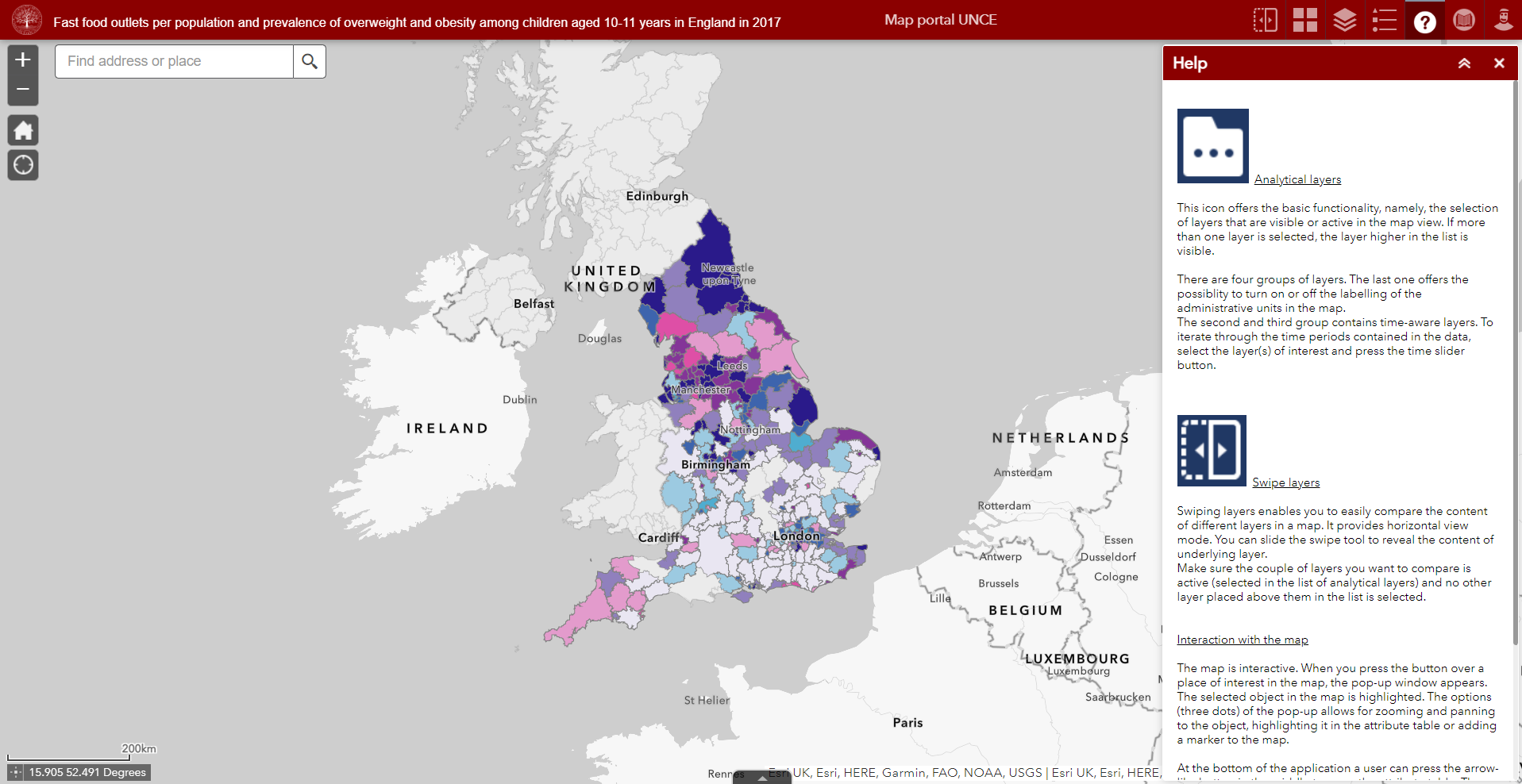Fast food outlets per population and prevalence of overweight and obesity among children aged 10-11 years in England in 2017
(2017)
The web application examines the relationship between the number of fast food restaurants and the prevalence of overweight and obesity in children. The web map captures three main phenomena: 1) the prevalence of overweight and obesity in children aged 10-11 years in 2017-2018, 2) the number of fast food restaurants per population in 2017, and 3) a combined expression of the relationship between the number of restaurants and the prevalence of overweight and obesity.

In response to a continuing and sharp rise in obesity worldwide in recent years, particularly low-income countries and among children, the World Health Organization’s (WHO) has called for urgent action to tackle obesity among children and issued a global action plan that aims to stop childhood overweight and obesity (World Health Organization (WHO), 2014). Moreover, childhood obesity is a known factor contributing to adult obesity and is associated with the development of diabetes and cardiovascular diseases in adult life (Gordon-Larsen et al., 2010; Umer et al., 2017). Therefore, it is important to prevent childhood obesity at the earliest age.
The objective is to investigate the relationship between the number of fast food outlets and prevalence of overweight and obesity in children. In the map, there are mainly three layers: 1. Prevalence of overweight and obesity among children aged 10-11 years in 2017-2018; 2. Number of fast food outlets per population in 2017; and 3. Bivariate to show the relationship between the number of fast food outlets and the prevalence of overweight and obesity.
The layer for the bivariate analysis shows that the number of fast food restaurants and the prevalence of overweight and obesity are higher in areas London, West Midlands and North East. This finding corresponds to the UK government’s report on children’s health “National Child Measurement Programme (NCMP) for England, 2017-18 school year” which reports obesity prevalence was also highest in London, West Midlands and North East.
Does this mean the number of fast food restaurants cause obesity in children? A recent study by Han et al. (2020) showed that childhood obesity increases with proximity to fast food outlets among lower income household in the New York City. Childhood obesity is a complex, multifactorial disease which can be the result of genetic factors and/or a combination of genetic, social, environmental, and behavioral factors. Causal links between the number of fast food restaurants and obesity are not simple. Further research is needed, but this map may provide a glimpse of a possible cause of childhood obesity.

